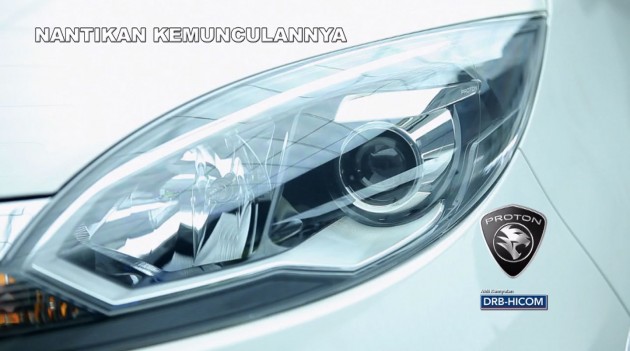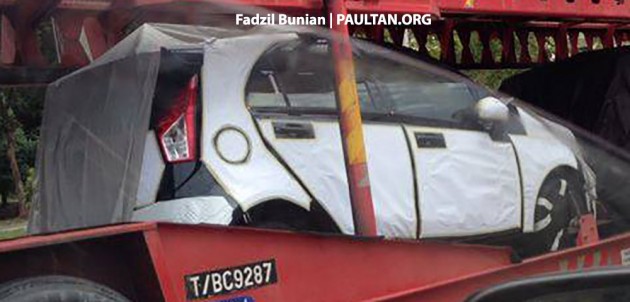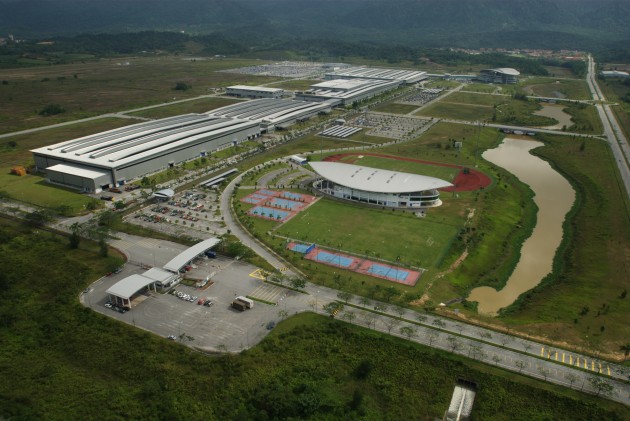
It's exciting times ahead in Malaysia, at least where the automotive industry is concerned. The upcoming Proton PCC (or Proton Iriz, if you must) is just around the corner, and we've been given a short tour of the new car's birthplace to see the efforts Proton has made to improve its quality, reliability and of course, safety.
Before we start, a short side note. Proton has kindly asked that until the car is launched, we refer to the new model as the PCC (Proton Compact Car) instead of the old GSC (Global Small Car) codename. Why? Because it's not so small, apparently. Right, then, on to the good stuff.
Some of you may have spotted camouflaged fleets of the B-segment hatchback being driven around recently. No, there are no last-minute fine-tuning shenanigans here, just plain old on-road durability testing. All variants of the new model are each on the tail end of planned 100,000 km durability tests. Here, four production-spec cars cover around 1,000 km daily, through mixed driving conditions.
Throughout the development of this model, specific parts of the car have undergone strict comfort and longevity evaluations too. The headlights, for instance, have gone through a 1,000-hour heat ageing test.
Another one of the 671 component tests measure the effort needed to close the car's doors using specially-designed jigs (imagine Ikea's fancy durability test machines and you're not far off). The result, in this case, is excellent "door effort" levels - on par with European vehicles, claims Muhammad Aris Anuar, Proton's director of manufacturing.
The production schedule of the Proton PCC is well under way. Line consistency trials will start as soon as next week, and pre-production runs are set to commence in the coming month. Full mass production is set to follow shortly, and the new cars will be available in showrooms by the time the model is launched, which we have been re-affirmed will happen very soon indeed.

In the state-of-the-art Proton Tanjung Malim plant, the PCC will be produced in the same line as the larger Preve and Suprima S models. The Persona and Gen2 (for export markets) are run on a separate production line in the same facility, while the Saga and Satria Neo are built at the main Shah Alam plant, and the Exora and Inspira at the MVF (Medium Volume Factory) plant, also located in Shah Alam.
New for the PCC production line is the inclusion of a main body robot inspection. Yet another quality check gate, this addition is said to improve production consistency and speed. As it is, Proton Tanjung Malim operates with up to 80% automation level, using 205 robots at various stages of the production process.
Final inspections before delivery are all done manually, of course, which include shower (apparently one of the most severe of its kind, to simulate our brutal downpours), running (on a private test track) and radio reception tests – all done within the 240-acre facility (spread over 1,280 acres, as part of the 4,000-acre Proton City project).

The manufacturing process in the Proton plant uses the biggest stamping equipment in South East Asia. Also a region-first is the use of Hot Press Forming (HPF) technology for vital components of the body-in-white. More commonly used on European vehicles, HPF parts have three times the strength of mild steel, opening up doors for improved safety (self explanatory) as well as weight reduction (less material needed).
First introduced in the Preve and Suprima S, Proton's upcoming B-segment hatchback will also benefit from this technology. The PCC will incorporate four HPF parts, plus another four cold roll-forming high tensile strength steel components for much improved safety.
For a simple comparison, Proton pointed out that the Volkswagen Polo, Audi A4 and BMW 5 Series use five, nine and 13 HPF parts respectively, while both the Preve and Suprima S have 12 each (the red bits below). Japanese automakers, on the other hand, have not adopted such a technique.
Just like its big brothers, the PCC has received a 5-star crash test rating by Australasian New Car Assessment Program (ANCAP) - we've seen the crash test video; the small car looks mighty strong. Closer to home, it will be tested by ASEAN NCAP next month, and Proton is confident of a full 5-star safety rating as well.
With improved quality and safety, Proton is clearly moving in the right direction with the PCC. Deputy CEO Khairuddin Datuk Hj Yusoff himself added, "there are many challenges that we need to overcome in this highly competitive industry. There is the need to address negative past experiences of our customers, as well as correct market perception and show that Proton offers good quality and value for money cars.
"Ultimately, we want to win the customer's heart and mind," he concluded. Time will tell, then. Time will tell.



No comments:
Post a Comment